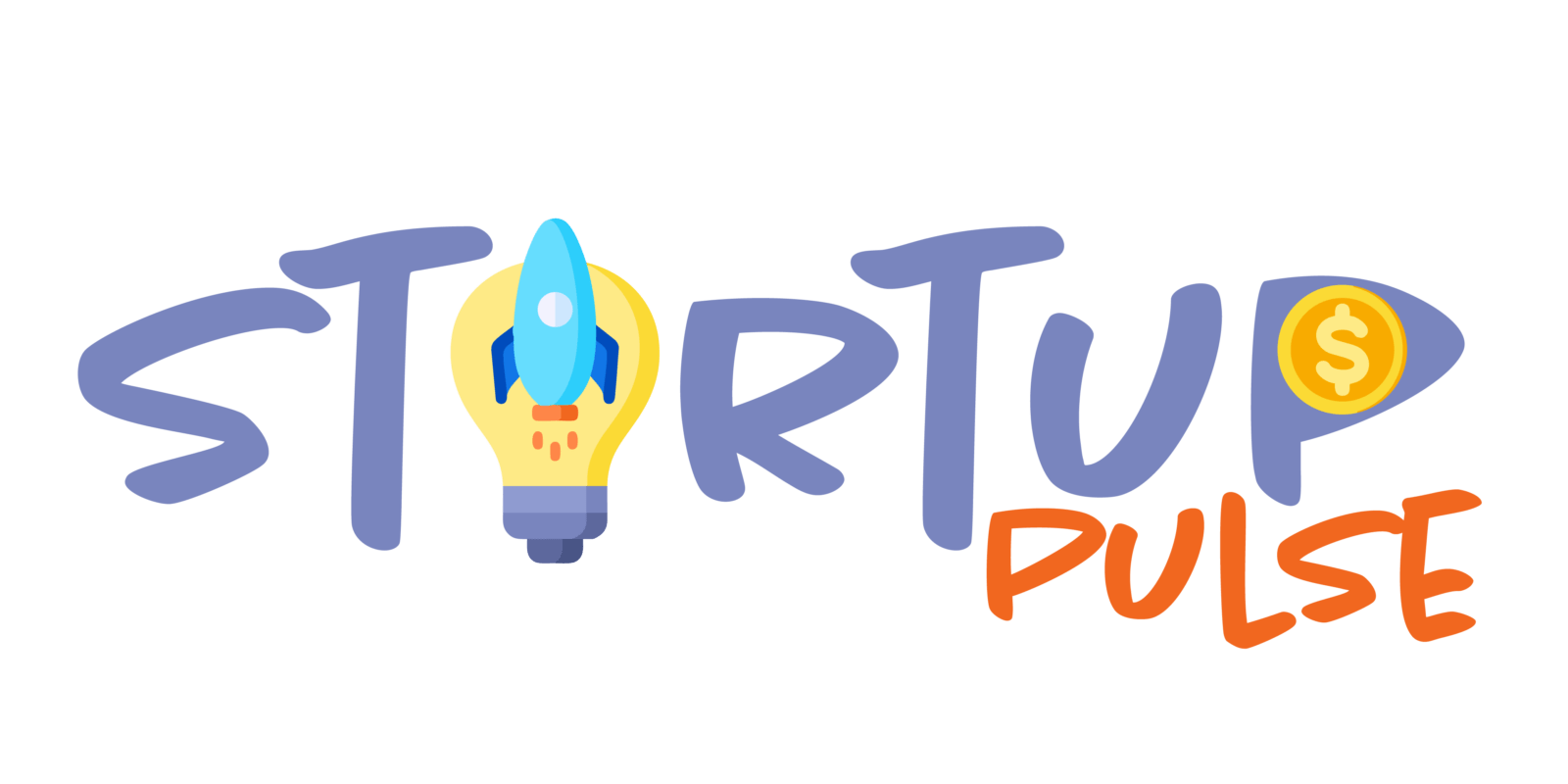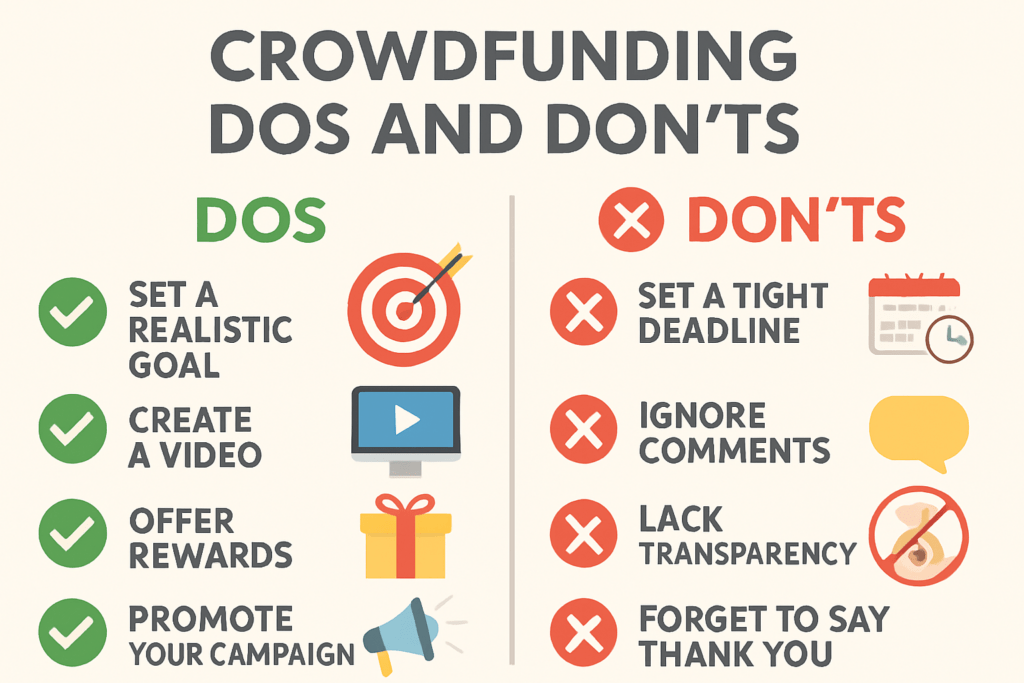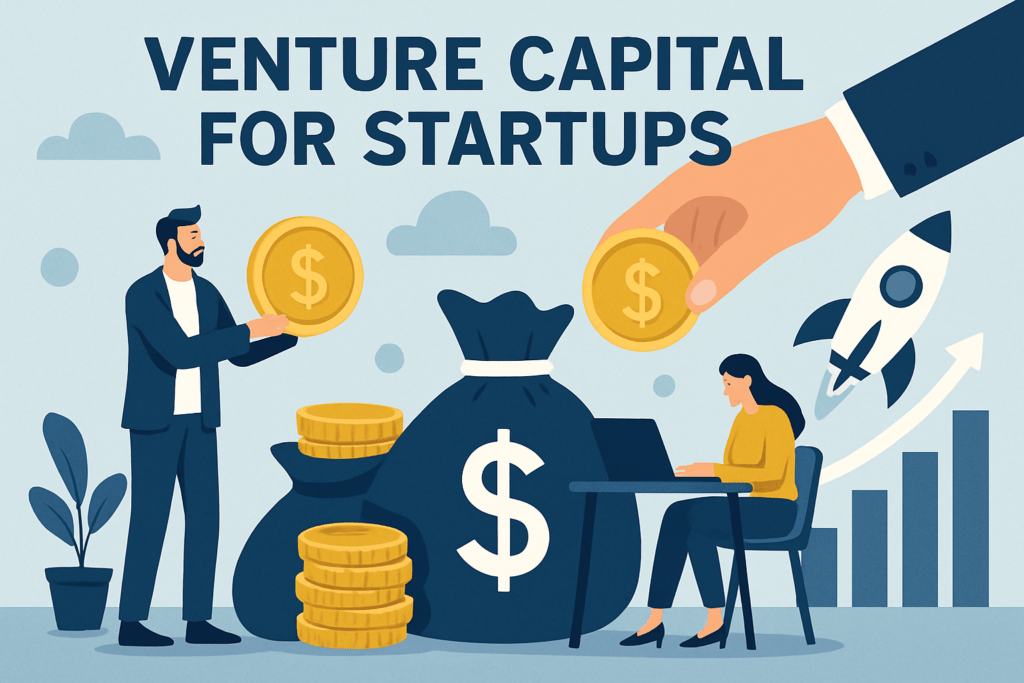Crowdfunding Dos and Don’ts: Launching Your Startup the Smart Way
- Clear, brass-tacks intro on why crowdfunding is appealing for modern founders
- State who this guide is for (founders looking for practical strategy, not hype)
- Work in the key phrase: crowdfunding dos and don’ts
- Mention this is an award-winning approach for anyone thinking about online fundraising
Crowdfunding Dos and Don’ts: Launching Your Startup the Smart Way
Crowdfunding has become the go-to option for ambitious founders tired of gatekeepers and tired of hearing “no” from the usual suspects. In an era where one viral moment can rewrite your destiny, the ability to raise capital directly from your community is both liberating and addicting. But let’s cut the fluff: just because you have a big idea doesn’t mean backers will rush in with open wallets. There’s art and science to this—and a long list of crowdfunding dos and don’ts that separates headline makers from the also-rans.
This guide isn’t for those hoping to strike lightning with empty promises or clever PR. It’s for founders who want a brass-tacks roadmap, built by people who’ve been in the trenches. If you’re serious about online fundraising and want an award-winning approach that actually works, you’re in the right place. Let’s break down exactly what you should—and absolutely should not—do when launching your next big thing online.
The Appeal and Pitfalls of Crowdfunding
Let’s be blunt: crowdfunding is packed with upside. It gives startups access to cash and people — two resources founders can never have enough of. You’re not just raising money; you’re testing your baby on a public stage. Win over strangers, and you get early validation, a tribe that cares about your progress, and online visibility you just can’t buy.
But here’s a warning, straight up. The most common traps don’t look like traps; they look like shortcuts. Founders fall flat because of mixed messages—saying too much or too little, or saying the wrong thing entirely. Miss your funding target because you guessed, not planned? Hard to come back from that. And if you burn out halfway through (the campaign grind is real), your backers will vanish faster than your optimism.
Here’s one of the sharpest crowdfunding tips you’ll get: treat the process like a marathon, not a launch party. Skip the prep, and you join the pile of forgotten projects. Prepare, and you’re already above average.
Do: Build a Community Before You Launch
Here’s the brass-tacks: most campaigns don’t fail from lack of genius ideas—they fail because nobody’s listening. Don’t get blinded by stories of going viral overnight. The hype says launch day is a start; reality is, community work happens long before you ever hit “go.” If you want campaign success, you need people invested from day zero.
Start early and simple: build a mailing list, however small. Tease your idea with “coming soon” updates. Give people a reason to care by sharing your origin story (yes, get personal—people back founders, not faceless products). Think about hosting a soft-launch: invite a handful of beta backers, let them poke holes in your plan, and talk about their feedback. Each little preview or behind-the-scenes snapshot builds both anticipation and trust.
Ignore this and you risk launching “cold”—meaning only your mom and your most generous friend will show up. Don’t count on crowdfunding platforms to supply a sea of strangers. The reality: most successful campaigns draw their first 30-50% from people who already know or follow the creator. If you wait to meet your crowd until launch day, you’re already behind.
So, hype is fine for trailers, but for campaign success, put in the quiet groundwork. Build the kind of crowd that shows up not just with wallets, but with excitement, feedback, and early momentum. Your future self—and your funding target—will thank you.
Don’t: Oversell or Promise What You Can’t Deliver
Here’s where a lot of founders trip up: letting excitement override reality. Crowdfunding backers are savvier than ever, so promises loaded with buzzwords or padded timelines only set you up for trouble. Yeah, you want your idea to sound big—but don’t fall into the classic trap of guaranteeing features you can’t build, shipping dates you can’t hit, or stretch goals you have no shot at reaching.
Stay spartan with your commitments. Lay out exactly what your team can deliver, and build your campaign rewards around things you know you can control. If your product needs a year in development, don’t claim it’ll be out in six months to juice your funding totals. Nobody wants to be the next headline about “the gadget that never shipped.”
Some of the biggest crowdfunding flops happened because founders didn’t set boundaries—look up the disaster stories (the Coolest Cooler, anyone?), and you’ll see a pattern: overpromising, underdelivering, and disappointing the loyal fans who made the campaign possible in the first place. Here’s the simple rule: understate, then overdeliver. Your reputation—and any shot at campaign success down the road—depends on it.
Do: Make Your Pitch Honest and Visual
No one wants to back a smoke-and-mirrors show. Backers crave proof. That means your campaign pitch needs to be straight-up, honest, and heavy on visuals that actually show your real work—not just fancy concepts or mockups you pulled together in a rush.
Start with a short, clear video. Nothing Hollywood—just you (and your team, if you’ve got one), looking the camera in the eye. Show what you’re building, why it matters, and who’s making it happen. Skip jargon and buzzwords; explain your idea like you would to a neighbor over coffee. People fund people, not faceless products.
Layer in real photos. If you’re still in prototype mode, even messy desk pictures are better than stock images. Let your progress (or honest setbacks) show. If you’ve got sketches or a working model, display them up close. Transparency attracts belief.
Don’t hide your team. Who are you? Two lines about each person, what drives you, and what you’ve built before is enough. Authentic bios—no padding.
Update visuals as you go. Show work-in-progress shots as you refine your idea. This shows momentum and gives backers a reason to believe in your campaign success.
In short: keep it real, keep it visual, and let people see the humans—and the hustle—behind the project.
Don’t: Neglect Your Budget or Legal Basics
Fuzzy math is a campaign killer. Too many founders hit “launch” with a beautiful pitch and zero clue what their actual costs will be. Crowdfunding doesn’t forgive guesswork: backers expect you to know how much you need, where it’s going, and what it’ll take to deliver. Undercut your shipping, production, or platform fees and you’ll burn through funds before your first reward ships—or worse, run out with angry supporters demanding answers.
Here’s what separates the pros: honest budgeting. Sketch every expense, from prototypes to packaging, taxes, and that commission the crowdfunding platform takes off the top. Double-check the timeline for each product phase and be hyper-realistic about how long manufacturing and delivery really take. Transparency isn’t just a buzzword; it’s how you earn trust.
Don’t skip the legal homework. Some products have shipping restrictions or require certifications; certain giveaways might run afoul of local sweepstakes laws. If you’re raising serious money, look up any securities regulations that could apply to your campaign. Quick consults with an accountant or business attorney can save you huge headaches later. Crowdfunding dos and don’ts aren’t just about hype and updates—they start with hard, smart planning before you ever go live.
Do: Engage and Update—Even After Funding
Here’s where most campaigns start slacking: once the money’s in, the communication drops off a cliff. Don’t be that founder. Campaign success isn’t just about raising funds, it’s about building relationships that last. Your backers just put faith—and real dollars—into your idea. The least you owe them is regular, real updates.
So, what does that look like? At minimum, update your backers every two weeks (weekly is better during critical phases). Let them know what’s going right, what’s delayed, and how you’re tackling issues. Transparency—good news and bad—turns frustrated backers into tolerant, even loyal, supporters.
Don’t hide behind canned responses. Jump into your campaign comments. Answer questions. Celebrate wins out loud, but also admit setbacks quickly. Treat your backers like your first users, not just sponsors. You’ll find that honest communication doesn’t just reduce refund requests; it creates “super-backers”—fans who will share your updates, defend your brand, and come back for future projects. There are plenty of stories of campaigns that fell behind schedule but kept most of their support simply because they never left their backers in the dark.
Looking to level up? Check out navigating the world of venture capital for more on building founder credibility and trust. Bottom line: updates aren’t a chore—they’re a power move.
Don’t: Treat Fulfillment as an Afterthought
Here’s the unvarnished truth: nobody remembers your hype if you botch delivery. Shipping delays and production errors aren’t just annoying—they break trust, fast. Backers don’t want excuses. They want the thing they paid for, on time, as promised.
Start by building accountability into your timeline. Announce when products will ship publicly. Factor in manufacturing lead times, supplier hiccups, packaging, and global shipping headaches. Be honest with yourself about the worst-case scenario. Then add extra padding. If things slip (and sometimes they will), updates are better than going dark—but the real fix is planning for bumps before they happen.
Always have a backup plan: extra suppliers, reserve inventory, contingency funds for unexpected costs. Break fulfillment down into checkpoints—production ready, parts ordered, assembly finished, shipping in progress, deliveries tracked. Share these transparently; it keeps your team sharp and your backers calm.
Bottom line: treating fulfillment like a box to check after the campaign is a rookie mistake. Own it from the start and you’ll build something rarer than a viral campaign: lasting loyalty.
Pro Tips: What Separates Standout Campaigns
Want to toughen up your odds in online fundraising? Here’s the no-fluff checklist most top campaigns rely on—not just to get funded, but to stand out in a way that pays off long after launch:
- Social proof, fast: Backers crave reassurance. Post early testimonials (even 2-3 matter), share your “press mentions,” and tap advocates before your campaign goes live.
- Day-one momentum: The first 48 hours are make-or-break. Send reminders to your mailing list, get friends/family on board to seed funding immediately, and show early results to build steam.
- Transparent updates: Be ruthlessly clear about progress, setbacks, and use of funds. Open communication builds trust—and trust brings more backers (and sometimes, rescue angels if things go sideways).
- Show faces, not just features: Team videos > generic product shots. Put credibility front and center.
- Community first, cash second: Founders who build online fundraising campaigns around a community—think Q&As, forums, AMAs—tend to get backing that lasts, not just money that disappears the day after launch.
Bottom line: Don’t push for the quick win. Push for a campaign that people want to talk about, and you’ll set yourself up to win well beyond funding day.
External Resources for Crowdfunding Success
No matter how much you prep, there’s always more to learn. The world of crowdfunding is a moving target—tools, platforms, and best practices shift constantly. So, don’t go it alone. Bookmark practical, up-to-date sources like this crowdfunding guide for deep dives—these cut through the fluff and hype and get straight to what works. Subscribe to a few trusted newsletters, hit up founder forums, and keep tabs on what’s happening in online fundraising. Bottom line: the best founders are always learning and ready to adapt. Stay sharp, stay curious, and don’t assume you’ve seen it all.
Wrap Up: Launch with Purpose
Here’s the bottom line: the art of crowdfunding is built on a series of hard-edged dos and don’ts. Build your crowd before you ask for a dime. Don’t let hype outrun reality. Show what’s real, skip the smoke and mirrors. Set budgets that pass the straight-face test. Stay on top of the legal stuff. Most importantly, treat every backer like the backbone of your campaign—because they are.
Remember, crowdfunding isn’t just about raising money; it’s about forging connections and accountability. The best founders treat each update, response, and even every setback as a chance to build trust. Commit to planning, engaging, delivering—and then doing it all over again, better. Crowdfunding is a long game that rewards the diligent and the honest. Ready to start? Map your campaign with intention, put in the work, and launch with clear purpose. Your future backers can spot the difference.




